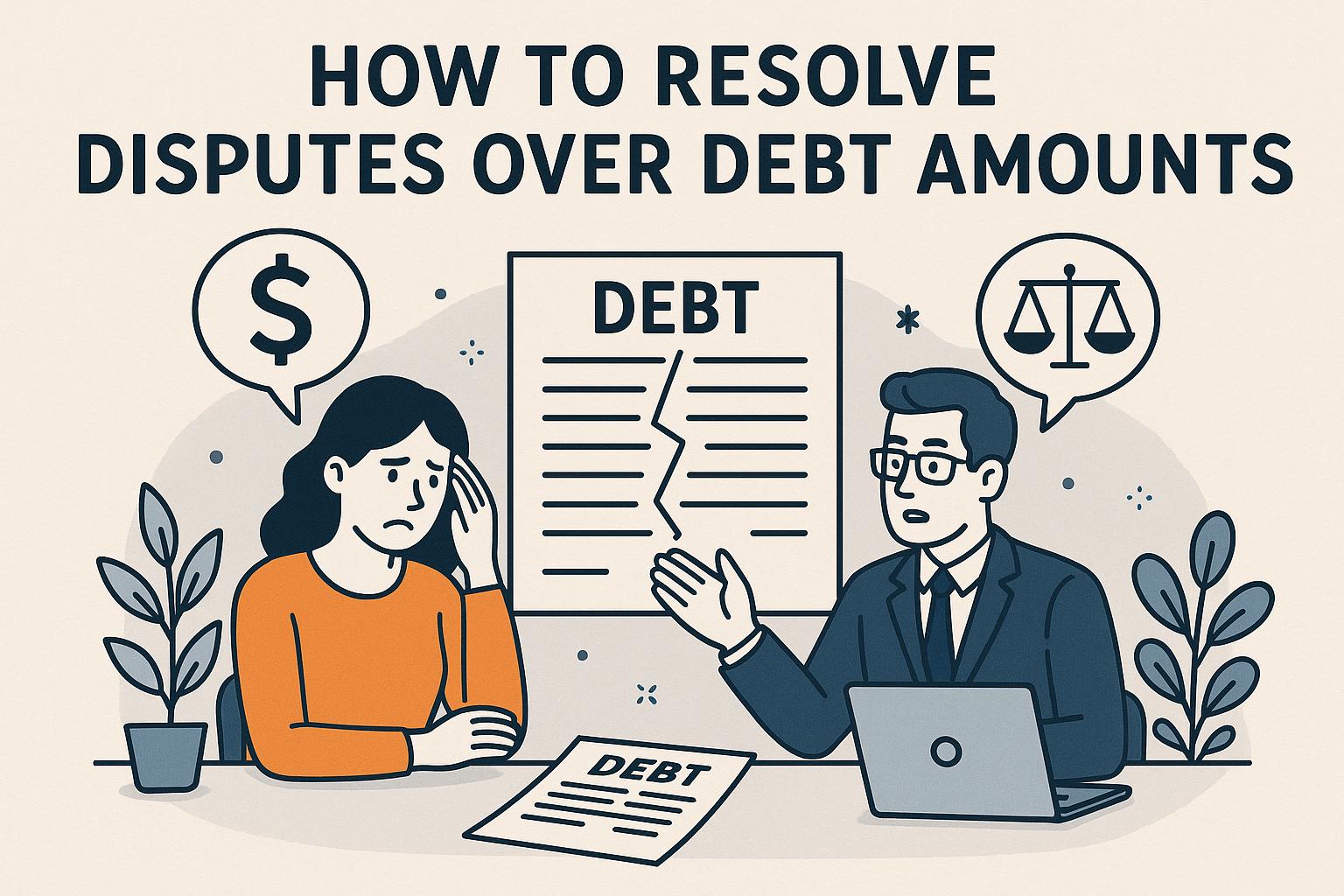
How to resolve disputes over debt amounts.
Understanding the Issue
Before attempting to resolve disputes over debt amounts, it is fundamental to gain a comprehensive understanding of the situation. Disputes over debts can often arise from a variety of causes, including misunderstandings, clerical errors, or a sheer lack of communication. To effectively address these issues, it is paramount to start by gathering all necessary documentation related to the debt in question. This documentation should encompass contracts, bills, receipts, and any previous correspondence related to the matter. Having a complete and organized record is crucial in determining whether a dispute holds any legitimacy.
When dealing with debt disputes, parties involved must acknowledge that issues might not always be straightforward. Many times, the core problem might be rooted in overlooked details within agreements or inaccuracies in recorded transactions. By obtaining all relevant materials and reviewing them meticulously, parties can better position themselves to analyze the foundation of the disagreement. This thorough understanding can act as a guiding principle in resolving the issue efficiently and fairly.
Communication is Key
In the realm of debt disputes, effective communication emerges as an essential tool for resolution. Engaging with the other party, whether it is a creditor or a debtor, is the initial step towards addressing and hopefully resolving the conflicting matter. One should initiate contact through an official channel, such as email or a formal letter. This ensures the conversation is documented and can be referred back to if necessary.
A well-constructed communication should clearly outline the points of contention. It’s advisable to provide any evidence or supporting documents that bolster your position. Furthermore, maintaining a professional and objective tone is critical to facilitate a constructive dialogue. It’s crucial to focus on facts and steer clear of emotional language, keeping the interaction clear and pointed towards finding a resolution. By establishing a cooperative atmosphere, both parties can work together towards an effective solution without unnecessary conflict or misunderstanding.
Reviewing the Terms and Conditions
An important step in resolving debt disputes is the careful review of any terms and conditions relating to the debt. This review helps in identifying potential discrepancies or misunderstandings that may exist. Pay special attention to clauses related to payment terms, interest rates, and penalties for late payments. This understanding lays the groundwork for clarifying both obligations and rights, enabling a smoother path to resolving disputes in an amicable manner.
The terms and conditions that govern debt agreements often contain specific details that might initially seem trivial but can significantly impact the nature of the dispute. By going over these terms meticulously, parties can discover whether the dispute arises from an oversight or misinterpretation. Understanding these intricacies is not only vital for the current situation but serves as a learning experience for handling future transactions more effectively.
Seeking Mediation
If attempts at direct communication do not yield results, seeking the assistance of a neutral third party, such as a mediator, could be a beneficial next step. Mediation provides a structured environment for both parties to openly discuss their viewpoints without escalating tensions. The mediator acts as a facilitator, guiding both parties towards a resolution that is mutually agreeable.
Mediators are trained to handle disputes impartially and are skilled in conflict resolution techniques. This external perspective can provide fresh insights into the situation, helping parties to see the issue from different angles. Many community legal services offer mediation services that could prove invaluable in such cases. By engaging in mediation, parties can potentially avoid the adversities associated with litigation, enabling a more efficient and cost-effective resolution process.
Legal Recourse
In scenarios where mediation is unsuccessful, legal recourse might become the necessary path to resolution. It is advisable to consult with a legal professional to explore available options and determine the feasibility of pursuing the matter in court. However, it is important to note that legal action can be both time-consuming and costly, and is therefore often considered a last resort.
Engaging with the legal system provides a formal method of resolution, ensuring that any settlement reached is legally binding. This pathway, although rigorous and demanding, might be essential when all other avenues have been exhausted. For those considering this option, it’s crucial to weigh the potential outcomes and repercussions against the costs involved, making an informed decision based on the specific circumstances of the dispute.
For individuals seeking more detailed guidance on handling financial disputes, numerous organizations specialize in providing resources and support. For example, the Consumer Financial Protection Bureau offers a wealth of information that could be immensely helpful in navigating the complexities of financial disagreements effectively.
Final Thoughts
Resolving disputes over debt amounts necessitates a mix of patience, clear communication, and comprehensive understanding of contractual obligations. By following these structured steps, you can effectively address such disputes, reaching a resolution that strives to be equitable for all parties involved. This approach not only aids in current situations but also builds a foundation of knowledge and experience that can prevent potential future disputes.
- Posted by
 admin
admin - Posted in Uncategorized
 Sep, 11, 2025
Sep, 11, 2025 Comments Off on How to resolve disputes over debt amounts.
Comments Off on How to resolve disputes over debt amounts.
